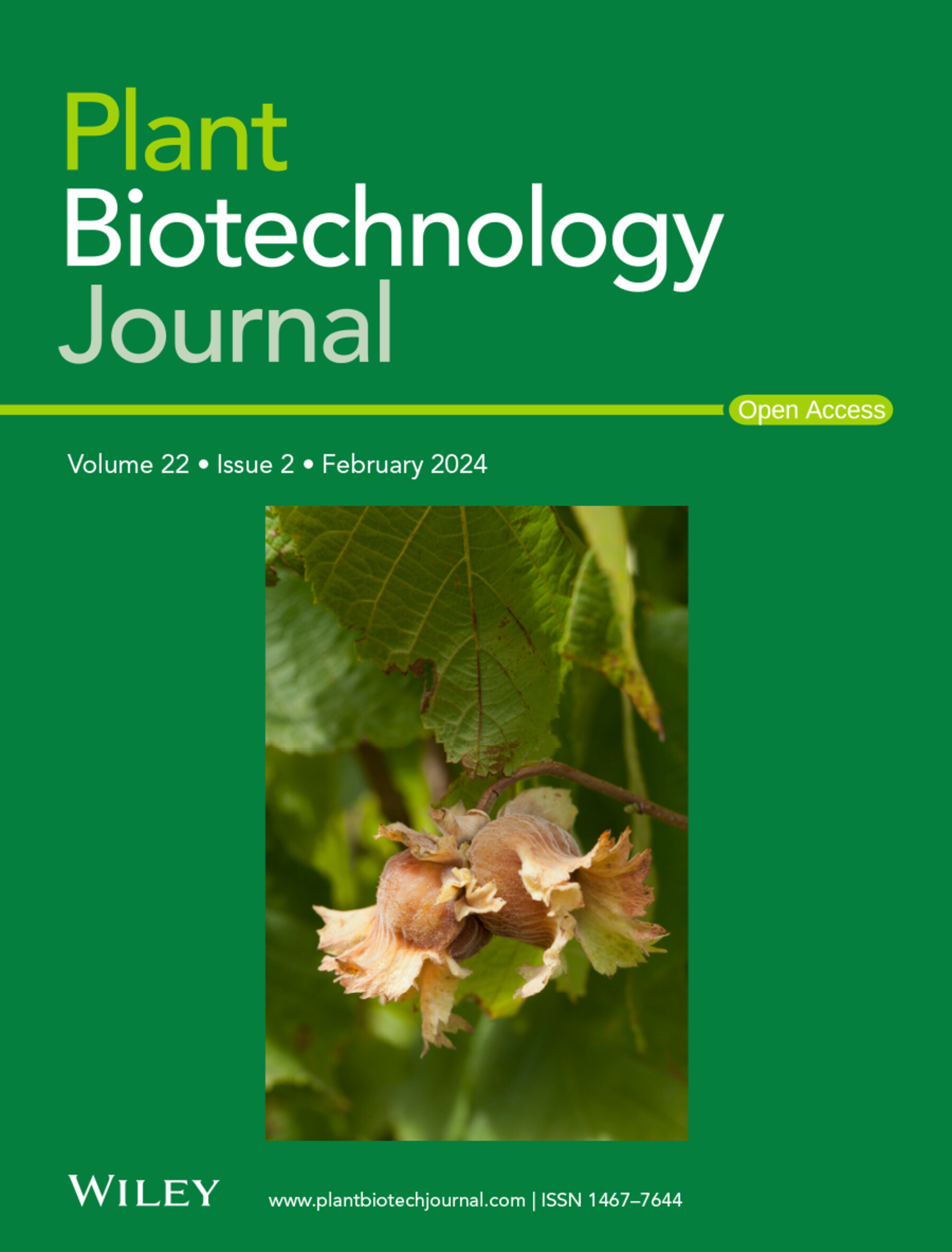CER2-LIKE1的功能缺失突变减少了威尔士洋葱表皮蜡的积累和对蓟马的敏感性。
IF 10.5
1区 生物学
Q1 BIOTECHNOLOGY & APPLIED MICROBIOLOGY
引用次数: 0
摘要
角质层蜡质可以在地上植物表面形成疏水屏障,通过提供生物和非生物胁迫保护来调节植物与环境的相互作用。在这项研究中,在威尔士洋葱(Allium fistulosum L.)中发现了一个表皮蜡突变体(gl),并对其进行了表征,该突变体表现出AfCER2-LIKE1的功能缺陷。AfCER2-LIKE1功能的丧失归因于启动子区域的反转录转座子插入和编码序列的移码突变。在突变体gl中,AfCER2- like1 (AfCER2- LIKE1gl)的功能丧失导致C28以上蜡组分显著减少。进一步的酵母异源表达分析表明,AfCER2-LIKE1gl不能与AfKCS11(3-酮胞-辅酶a, KCS)形成复合物,调节了超长链脂肪酸(VLCFAs)从C28到C30的延伸。此外,突变体gl对蓟马侵染的抗性增强,这一观察结果得到了田间试验和实验室对照试验的验证。总的来说,这些发现阐明了CER2-LIKE1在调节威尔士洋葱VLCFA生物合成中的作用,并为角质层蜡和抗虫性之间的关系提供了见解。这些结果为通过分子育种策略开发抗蓟马种质资源提供了理论依据,并为作物改良提供了潜在的应用前景。本文章由计算机程序翻译,如有差异,请以英文原文为准。
Loss-of-Function Mutation in CER2-LIKE1 Reduced Accumulation of Cuticular Wax and Susceptibility to Thrips in Welsh Onion.
Cuticular waxes can form a hydrophobic barrier on aerial plant surfaces, which is essential for mediating plant-environment interactions by providing protection against both biotic and abiotic stresses. In this study, a cuticular wax mutant (gl) was identified and characterised in Welsh onion (Allium fistulosum L.), exhibiting a functional deficiency in AfCER2-LIKE1. Loss of AfCER2-LIKE1 function was attributed to a retrotransposon insertion in the promoter region and a frameshift mutation in the coding sequence. In the mutant gl, the loss of function of AfCER2-LIKE1 (AfCER2- LIKE1gl) leads to a significant reduction in wax components above C28. Further analysis of yeast heterologous expression showed that AfCER2-LIKE1gl is unable to form a complex with AfKCS11 (3-ketocyl-CoA, KCS), regulating the elongation of very-long-chain fatty acids (VLCFAs) from C28 to C30. Furthermore, the mutant gl showed enhanced resistance to thrips infestation, which served as an observation validated by both field trials and controlled laboratory experiments. Collectively, these findings elucidate the role of CER2-LIKE1 in regulating VLCFA biosynthesis in Welsh onion and provide insight into the association between cuticular wax and insect resistance. These results offer a theoretical basis for the development of thrips-resistant germplasm through molecular breeding strategies and suggest potential applications for crop improvement.
求助全文
通过发布文献求助,成功后即可免费获取论文全文。
去求助
来源期刊

Plant Biotechnology Journal
生物-生物工程与应用微生物
CiteScore
20.50
自引率
2.90%
发文量
201
审稿时长
1 months
期刊介绍:
Plant Biotechnology Journal aspires to publish original research and insightful reviews of high impact, authored by prominent researchers in applied plant science. The journal places a special emphasis on molecular plant sciences and their practical applications through plant biotechnology. Our goal is to establish a platform for showcasing significant advances in the field, encompassing curiosity-driven studies with potential applications, strategic research in plant biotechnology, scientific analysis of crucial issues for the beneficial utilization of plant sciences, and assessments of the performance of plant biotechnology products in practical applications.
 求助内容:
求助内容: 应助结果提醒方式:
应助结果提醒方式:


